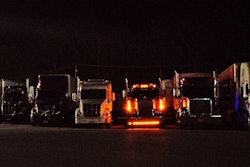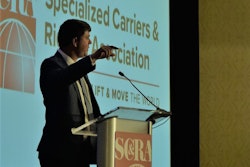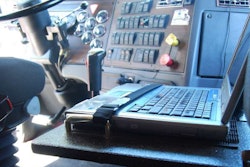The Federal Motor Carrier Safety Administration says it’s proceeding with implementation of a new hours of service rule designed to give drivers more flexibility in their daily work schedule.
“Right now, there’s no effort to abate or hold off on Sept. 29,” said the agency’s Acting Administrator, Jim Mullen, in FMCSA’s online Truck Safety Summit held Aug. 5.
Sept. 29, of course, is the date on which drivers can start utilizing the new provisions related to split-sleeper-berth logging, the adverse conditions exception, short-haul air mile radius and time limitations and the 30-minute break.
“We’re still doing outreach and education” with a variety of stakeholders, he added, and creating training materials. “Right now, we’re on track.”
That’s in spite of a couple of significant petitions for reconsideration of the rule that have been filed to the agency, including the highly publicized one asking for a complete stay of the rule by the International Brotherhood of Teamsters, Advocates for Highway and Auto Safety and others.
A less-publicized reconsideration petition put forward by the Commercial Vehicle Safety Alliance offers options for addressing what CVSA feels is inconsistency between FMCSA’s intent and the regulatory language of the rule around the adverse conditions exception. Though FMCSA’s public statements, the Alliance said, seem to indicate it doesn’t intend to allow operators running under the 150 air mile short haul exception to use the adverse conditions provision, regulatory language as currently positioned seems to allow it.
“As written, the rule does not prohibit a driver from combining these two provisions,” CVSA wrote. “Without clear language stating the two provisions cannot be combined … the presumption is the combination is permitted.” CVSA offered a few options to adjust regulatory language to remove potential confusion, whether use of the adverse conditions exception by short-haul drivers is ultimately allowed or not.
 Click through the image for a larger view of the hours of service changes in brief, or follow this link.
Click through the image for a larger view of the hours of service changes in brief, or follow this link.In its petition, CVSA also asked for a mileage limitation on the use of personal conveyance, a CVSA ask that has been made of the agency before without results. The Alliance argued that some “maximum allowed distance for personal conveyance” might eliminate inconsistent enforcement among inspectors as well as confusion for inspectors and drivers – and “ensure safer roads, as commercial motor vehicle drivers are on notice that personal conveyance time cannot be used as a safe harbor for driving hundreds of miles after exhausting their HOS.”
Asked by Overdrive about these petitions and their potential to throw a hiccup into the timeline for the rule’s implementation, FMCSA Public Affairs lead Kyle Bonini noted the requests “remain under review.” Bonini further underscored the agency’s intent to move forward. “The new HOS regulations will start on Sept. 29, 2020.”
Owner-Operator Independent Drivers Association Executive Vice President Lewie Pugh applauded “the agency’s approach” in his comments on the new hours of service provisions. “We do anticipate these going into effect at the end of next month.” OOIDA would like to see further expansion of the split sleeper berth provision, he added, to allow for 6/4- and 5/5-hour sleeper splits. (Some other associations, such as the Specialized Carriers & Rigging Association and driver-led groups like Trucker Nation, have likewise called for more split options.)
Yet Pugh’s commentary during the Truck Safety Summit also emphasized what he viewed as the added stress, cost and fatigue that has been a result of the electronic logging device mandate, where he saw “no safety benefit.”
American Trucking Associations President Chris Spear, whose organization backed the ELD mandate, urged FMCSA to do more not to be a hindrance to innovation when it comes to safety – whether in the area of technology or elsewhere. With technology in particular, innovation is “moving 10 times faster than the government,” Spear said. With things like automatic emergency braking becoming a reality in passenger cars and in many heavy trucks as well, vehicle-to-vehicle and vehicle-to-infrastructure (V2X) communication could bear particularly needed fruit when it comes to the distracted motorist’s role in commercial motor vehicle safety, or lack thereof.
The motoring public’s distraction and its role in so many collisions with commercial trucks is a “technology-borne problem,” Spear said, where further technological “innovation may be the only solution. Connecting cars, trucks and infrastructure is the most innovative way to combat distracted driving.”
The Federal Communications Commission’s recent moves to give away part of the spectrum on which V2X technologies operate have been opposed by various trucking stakeholders, including CVSA and ATA. The FCC’s move is in part to help accommodate the needs of Wi-Fi stakeholders.
Spear called preservation of that spectrum for increased future V2X use “putting the motoring public ahead of big cable.”
Other issues aired in the first session of the Truck Safety Summit included long delays in the Department of Health and Human Services’ groundwork to create guidance around the use of hair in drug testing, speed limiters (favored by ATA and Road Safe America’s Steve Owings, who spoke at length about favor for a mandate long since tabled by FMCSA), truck parking, detention and more.











